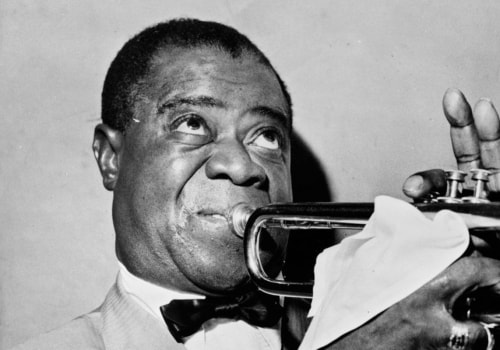In the late 1890s, a new sound began to emerge in the United States. Syncopation was joined by moving melodies, upbeat dance tunes, and the sensual sound of metal instruments, and jazz was born. Buddy Bolden, an African-American leader called “the first man in jazz” by historian Donald M. Marquis, was at the forefront of this movement.
But where did jazz originate from?Jazz originated in New Orleans in the second half of the 19th century. This port city had people from all over the world who socialized and shared their music. You could hear music from all over the world on the streets of New Orleans. It was also one of the only places in the United States that allowed slaves to own drums.
Jazz developed in the United States in the early 20th century, and New Orleans played a key role in this development. The city's population was more diverse than anywhere else in the South, and people of African, French, Caribbean, Italian, German, Mexican, and American Indian descent, as well as English ancestry interacted with each other. African American musical traditions mixed with others and jazz gradually emerged from a mix of ragtime, marches, blues and other types of music. In the beginning, jazz was mostly for dancing. In later years, people would sit and listen. The evolution of jazz was led by a series of brilliant musicians such as Louis Armstrong, Duke Ellington, Charlie Parker and Miles Davis.
Jazz developed a number of different styles, including traditional jazz, swing, bebop, fresh jazz and jazz-rock. At the same time, jazz spread from the United States to many parts of the world, and today jazz musicians and festivals can be found in dozens of countries. Jazz is one of the largest U. S.
exports to the world. It is quite possible that the mystery of the origins of jazz comes from one of its first talented musicians. Charles Buddy Bolden is still virtually unknown. Born in New Orleans in 1877, he became a bandleader's show before Louis Armstrong. The jazz era culminated with the historic Benny Goodman concert of 1938 at Carnegie Hall which brought together musicians of various ethnicities to play jazz inside this sacred hall. Jazz was born in this new world of emancipation and freedom, stimulating a spirit of experimentation and expression that would be key elements of jazz.
Nick La Rocca, cornetist and composer of The Original Dixieland Jass Band claimed that he invented jazz himself; although cornetist Buddy Bolden had a much better claim or even Creole artist Morton who was undoubtedly the first to write jazz as scores and always said he had invented it. In 1917 The Original Dixieland Jazz Band recorded the first commercial jazz recording while playing in New York City where they were enthusiastically received. In the early 1980s a commercial form of jazz fusion called smooth jazz succeeded garnering significant radio coverage. Jazz has been since its inception in the early twentieth century a music in constant evolution expansion and change going through several distinctive phases of development; a definition that could be applied to one phase for example New Orleans style or swing becomes inappropriate when applied to another segment of its history let's say free jazz. In fact these parameters would exclude several of the subgenres mentioned above including jazz-rock fusion Brazilian jazz and much of what we think of as modern European (and even American) jazz. Similarly blues has appeared in most great jazz in one form or another (although it could be said that it is less present in much of contemporary jazz) but there are other genres that use elements of blues without being considered jazzy. Jazz implies a spontaneity and vitality of musical production in which improvisation plays a role and contains a sound and a form of phrasing that reflect the individuality of the interpretive jazz musician. For example with the advent of free jazz and other avant-garde events in recent days many veteran musicians argued that music that was not swing was not jazzy.
In the 1970s The Betty Carter and Art Blakey & The Jazz Messengers groups retained their conservative approaches to jazz amidst fusion and jazz-rock; they endeavored to find younger generations to play authentic traditional styles such as hard bop and bebop. But certain types of jazz (or at least music adjacent to jazz with artists recognized as jazz musicians) have used straight rather than balanced eighth notes while preserving other elements that we associate with music. The most prominent at the beginning of this sacred movement were pianist & composer Mary Lou Williams known for her Jazz Masses in 1950s & Duke Ellington. The first Jazz recordings made in 1917 by The Original Dixieland Jazz Band proved tremendously popular & helped bring this music to enthusiastic audiences across America; others say it happened when Nick LaRocca & his Original Dixieland Jazz Band recorded their first album Livery Stable Blues. In 1960s & 70s many Jazz musicians had only basic understanding about Cuban & Brazilian music & compositions using these elements were often referred to as Latin melodies with no distinction between Cuban son montuno & Brazilian bossa nova.



